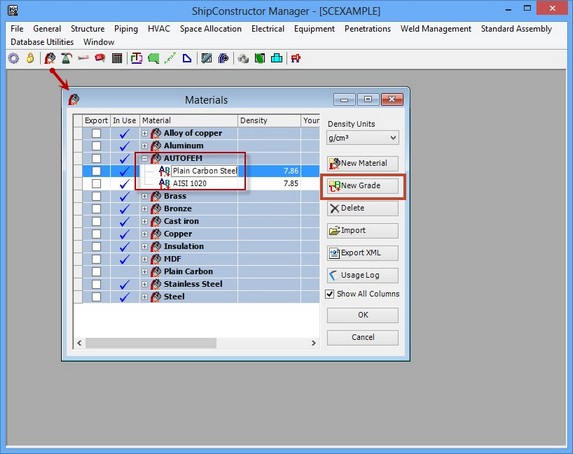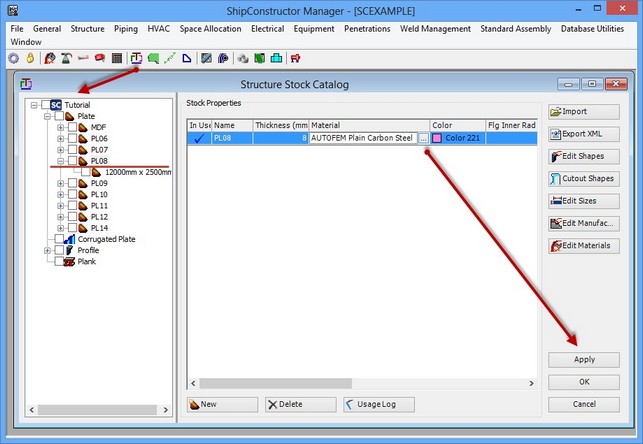 |
AutoFEM Analysis Work with ShipConstructor Materials | ||||||
Let us now more closely consider the two integration alternatives.
1. Direct reading of data from the ShipConstructor materials library using the "take properties from SC base" mode.
Firstly, the user will specify the mechanical properties of the desired materials in the ShipConstructor project database. For structural strength and buckling analysis, the minimum required set of properties includes the modulus of elasticity (Young's modulus, for example in N/mm2) and Poisson's ratio (dimensionless). For Frequency analysis (calculation of resonance frequencies), material density is required as well.

Structural material properties shown in the ShipConstructor database
To facilitate the review and processing of results involving safety factors in static structural FEA, it is also recommended to define, for each material:
• tensile strength,
• compressive strength.
• yield strength (separately for tension and compression, as may be the case),
When "take properties from SC base" is selected, the system will read the material properties from the ShipConstructor project database and will use them for the FEA calculation.
This approach is very powerful for design and scantling sizing work, as material properties are set only once, in the ShipConstuctor project database (and are available to other project databases).
2. Mapping ShipConstructor materials to AutoFEM Analysis materials using the "use AutoFEM materials by name" mode.
The user will ensure that the desired materials in the AutoFEM and ShipConstructor libraries bear the same name. The material properties are then defined only in the AutoFEM library, and these will be used for FEA calculations.

Creating a material whose name is the same in the AutoFEM and ShipConstructor material libraries

Assigning material to a part in ShipConstructor
This approach is convenient because it allows to use materials with complex properties (e.g., anisotropic) for the analysis of ShipConstructor models, and also to solve the problems of heat conduction and fatigue, in which the nonlinear material properties are not stored in the ShipConstructor material database and in fact can depend on various parameters which identified and quantified during calculation.

AutoFEM Analysis library of materials allows specifying materials with complex properties
and applying them to ShipConstructor models for FEA.
See also: Preparation of the calculation model, Settings of integration with ShipConstructor